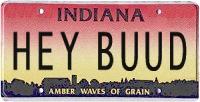



Do you enjoy covered bridges? Well we are in the right place then... Did you know?... Many skilled craftsmen constructed covered bridges in Indiana. The first Hoosier covered bridge was completed in 1835, and more than 90 covered timber bridges remain in the Hoosier state today. Covered bridges were often referred to as "kissing bridges" according to the tradition when a young couple were courting, the man was entitled to a kiss from his sweetheart as their wagon or buggy passed across the bridge. Covered bridges were often the largest covered area within a community and were used for revival meetings, weddings and political rallies.
BILLIE CREEK VILLAGE
Or are they? Since 1969, Billie Creek Village has provided a unique living-history museum.
Visitors to this authentic, Turn-of-the-Century Village can wander through the 30 historical buildings and exhibits. The biggest event is the Annual Parke County Covered Bridge Festival.
32 COVERED BRIDGES/COVERED BRIDGE FESTIVAL The covered bridges of Parke County were built between 1856 and 1920, most of them built by three builders. 32 covered bridges are a good reason for our name “The Covered Bridge Capital” that's more than any other county! Five colored coded routes are marked to follow any time of year. antiques and flea market booths, great food and starring those world famous 32 Covered Bridges!
WAAHPAAHSHIKI PEOPLES POW WOW In Battel Ground, Indiana a magnificent new 65,000 sq. ft. museum will be filled with beautiful artifacts and exhibits. More than twenty Great Lakes Tribes are working together to make The Woodland Native American Complex at Prophetstown a world center for Native American education. Native Americans are anxious to share their rich and sophisticated history.
WOLF PARK
Wolf Park in Battle Ground, Indiana is a nonprofit education and research facility which was established in 1972 by Dr. Erich Klinghammer. Wolf Park provides interpretive programs to school groups throughout the year by prearrangement. The park is also open to the general public from May through November and Saturday evening for Howl Nights. The park is home to several packs of gray wolves, plus foxes, bison and a coyote.
IMAGINATION STATION BY ASSET,INC Their dream? A hands-on, interactive science and space museum. A place for children and their families to explore the worlds of science, engineering and technology. The result? Through their continued generosity, the Imagination Station brings space, science, engineering, and technology to life for kids of all ages.
OLD JAIL MUSEUM The Rotary Jail of Montgomery County was designed by William H. Brown and Benjamin F. Haugh of Indianapolis, and was the first built in the United States. The rotary cellblock consists of a two-tiered turntable housed within a stationary steel cage with one opening per story. The jailer would simply rotate the mechanism to bring a particular cell to the opening, and in this way prisoners were put into and taken out of the cells. The turntable remained in operation until 1939 when it was immobilized, and the jail was finally closed in 1973
INLAND AQUATICS By constructing elaborate model ecosystems, we are not only able to properly care for and maintain delicate marine organisms, but study their behavior and reproductive strategies, and captively breed and propagate many of them. Captively bred animals are better adapted to life in an aquarium and reduce the need to collect specimens from the wild. In this way, we strive to ensure the safety of the great reefs of the world and promote an environmentally sound means of supplying organisms for the marine hobbyist, marine biologist, medical researcher and others.
MANSFIELD ROLLER MILL STATE HISTORIC SITE Listed on the National Register of Historic Places, the mill exemplifies the traditional period in milling that accompanied a change from stone to roller grinding. I.B.Crow says ..."There's More Than Corn In Indiana!" Indiana Beach, surrounded on three sides by Lake Shafer, is the Hoosier States' largest privately owned Amusement Resort. With over 1400 acres and 50 miles of shore line, the lake is a paradise for water sports enthusiasts. Modern facilities for both fishermen and boaters are strategically located around the lake. There are two championship 18 hole golf courses on Lake Shafer, and both are open to the public. Tennis courts, horseback riding, hiking, para-sailing are among some of the many activities available in the area. THE EXOTIC FELINE RESCUE CENTER The Exotic Feline Rescue Center's mission is to provide permanent homes for exotic feline that have been abused, abandoned or for some reason have nowhere to live out their lives. They depend on donations and sponsorships, they also can always use a volunteer or two. The cats are beautiful, don't miss out on seeing them! PURDUE UNIVERSITY
Purdue University is a coeducational, state-assisted system in Indiana. Founded in 1869 and named after benefactor John Purdue, the University is one of the nation's leading research institutions with a reputation for excellent and affordable education. Programs of graduate study and research leading to advanced degrees come under the jurisdiction of the Graduate School.
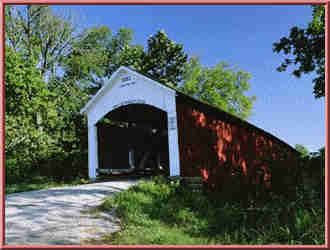 Bridges were covered to protect the floor timbers, extending the life of the bridge.
Bridges were covered to protect the floor timbers, extending the life of the bridge.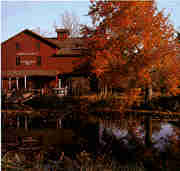 The days of skilled blacksmiths, neighborhood woodcarvers,homespun yarn and homemade candles are long gone.
The days of skilled blacksmiths, neighborhood woodcarvers,homespun yarn and homemade candles are long gone.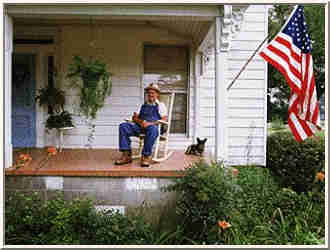 Located 1 mile east of the town of Rockville, Indiana, on U.S. 36, Billie Creek Village offers a host of activities throughout the year.
Located 1 mile east of the town of Rockville, Indiana, on U.S. 36, Billie Creek Village offers a host of activities throughout the year.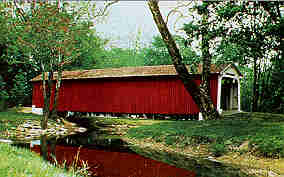 Over half of Indiana's Covered Bridges are located in Western Indiana with 32 of these historic structures in Parke County
Over half of Indiana's Covered Bridges are located in Western Indiana with 32 of these historic structures in Parke County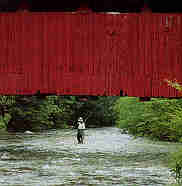 Park County has more Covered Bridges than any other county in the world!
Park County has more Covered Bridges than any other county in the world!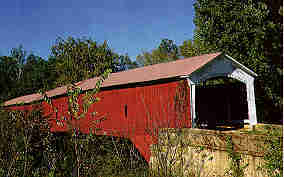 Indiana's Greatest Festival features fall foliage, hundreds of art, crafts,
Indiana's Greatest Festival features fall foliage, hundreds of art, crafts,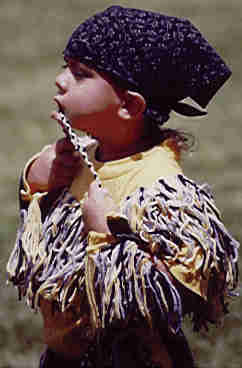 For at least 10,000 years, Native Americans have lived along the Wabash.
For at least 10,000 years, Native Americans have lived along the Wabash. Living history villages, depicting prehistoric and Prophetstown-era life, will provide your family with a glimpse of rich tradition.
Living history villages, depicting prehistoric and Prophetstown-era life, will provide your family with a glimpse of rich tradition. Along with research and seminars on wolf behavior, particularly reproductive and inter-pack social behavior,
Along with research and seminars on wolf behavior, particularly reproductive and inter-pack social behavior, In 1992, a dedicated group of people from the Greater Lafayette community formed the Association for Space, Science, Engineering & Technology; or ASSET.
In 1992, a dedicated group of people from the Greater Lafayette community formed the Association for Space, Science, Engineering & Technology; or ASSET. Opened in 1996, the Imagination Station is the result of the combined efforts of hundreds of committed volunteers and donors.
Opened in 1996, the Imagination Station is the result of the combined efforts of hundreds of committed volunteers and donors. 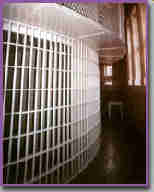 Completed in 1882 and one of seven known rotary jails, it is the last in operating condition.
Completed in 1882 and one of seven known rotary jails, it is the last in operating condition.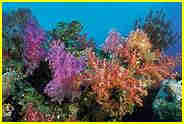 Inland Aquatics' primary mission is the conservation of our ocean resources.
Inland Aquatics' primary mission is the conservation of our ocean resources.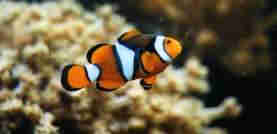
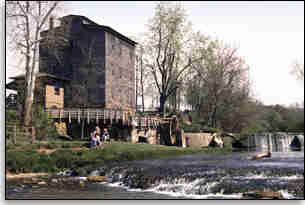 Rising three and half stories from a sandstone foundation on the banks of Big Raccoon Creek in Parke County, Indiana, is the Mansfield Roller Mill State Historic Site.
Rising three and half stories from a sandstone foundation on the banks of Big Raccoon Creek in Parke County, Indiana, is the Mansfield Roller Mill State Historic Site.
INDIANA BEACH
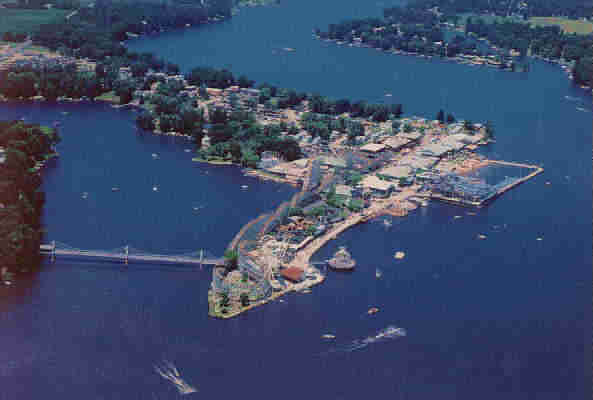 Lake Shafer is part of the Twin Lakes Vacation area encircling Monticello, Indiana.
Lake Shafer is part of the Twin Lakes Vacation area encircling Monticello, Indiana.
 Located in Center Point, Indiana is a very special place.
Located in Center Point, Indiana is a very special place. They believe cats have much to give and deserve to be treated in a humane and dignified manner.
They believe cats have much to give and deserve to be treated in a humane and dignified manner.
 Building upon historical strengths in engineering and agriculture, the West Lafayette Campus now offers nearly 6,700 courses in more than 200 specializations in the schools of Agriculture, Consumer and Family Sciences, Education, Engineering, Health Sciences, Liberal Arts, Management, Nursing, Pharmacy and Pharmacal Sciences, Science, Technology, and Veterinary Medicine.
Building upon historical strengths in engineering and agriculture, the West Lafayette Campus now offers nearly 6,700 courses in more than 200 specializations in the schools of Agriculture, Consumer and Family Sciences, Education, Engineering, Health Sciences, Liberal Arts, Management, Nursing, Pharmacy and Pharmacal Sciences, Science, Technology, and Veterinary Medicine.



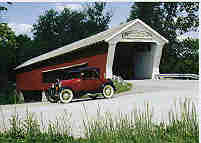
CUMBERLAND BRIDGE
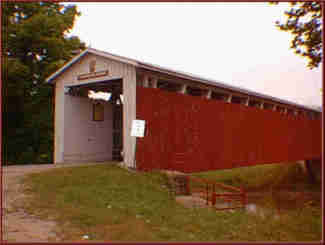 The 181-foot covered timbered bridge spanning the Mississinewa River at Matthews, built in 1877, is Grant County's last remaining covered bridge.
The 181-foot covered timbered bridge spanning the Mississinewa River at Matthews, built in 1877, is Grant County's last remaining covered bridge.
It was swept from its abutments by the great 1913 flood, and floated a quarter mile downstream and later returned to its abutments by horses. The bridge is the site of an annual festival on the first three-day weekend following Labor Day each year.
SEVEN PILLARS/MIAMI INDIANS
Along the Frances Slocum Trail, the cliffs of the Seven Pillars are visible. The cliffs once contained large rooms used by the Miami Indians for council meetings, social events and as a trading post.
UNDERGROUND RAILROAD/COFFIN HOUSE
"Why stand we here idle? What is it that gentlemen wish? What would they have? Is life so dear, or peace so sweet, as to be purchased at the price of chains and slavery? Forbid it, Almighty God! I know not what course others may take; but as for me, give me liberty, or give me death!"
Levi Coffin House – Their eight-room, Federal-style brick home became known as a “Grand Central Station” because of its instrumental role in the operation of the Underground Railroad. When Levi and Catharine (White) Coffin moved to Fountain City in 1826, it was called Newport. The young married couple left their home in Guilford County, North Carolina vowing to devote their lives to helping slaves reach Canada where freedom was guaranteed. They lacked connections and had limited knowledge of geography, and as a result many of the fleeing slaves were soon recaptured. The Coffins decided to openly risk their property and future to register their opposition to slavery. They felt it was a moral issue which far outweighed Federal laws passed by Congress dominated by the slave-owning South.
THE SALISBURY COURTHOUSE
Only log cabin courthouse still standing in the NorthWest Territory. The Salisbury Courthouse was erected originally at Salisbury in 1811. Salisbury, no longer a town, was located a little south of U.S. 40, midway between Centerville and Richmond. It was the first town laid out in Wayne County. However, in 1817 the county seat was moved to Centerville. The old Salisbury courthouse was sold and moved to Richmond where it was used as a home for many years. In 1952, after nearly 130 years of hiding, the old courthouse was rediscovered and moved to Centerville.
GRISSOM AIR MUSEUM STATE HISTORIC SITE Grisson Air Museum gives its visitors half a century of history and heroism in the skies. In the unique, outdoor display, see a legendary B-17 Flying Fortress, as if still on alert on a green English airfield. Marvel at the sleek beauty of the rare, record-shattering B-58 Hustler. Gaze down the tank-killing barrels of an A-10 Warthog. Inside the museum, visitors can sit in the cockpit of a Phantom jet, experience the daring of aviation pioneer William Kepner, and learn the exploits of famous units like the 305th Bomb Group and the Flying Tigers. Guests can examine aviation armaments, flight trainers, uniforms, models, photos, survival gear, engines, war prizes, aviation art and more. A theater is inside along with a gift shop filled with unique aviation souvenirs, art and books.
HOOSIER PARK Hoosier Park's grand opening was September 1, 1994. A crowd of 7,633 turned out for the historic night, wagering $406,485 on the ten-race card. Haston went on to capture the first driving and training championships in Hoosier Park history. Track length: 7/8 Mile, Average number of races each night: 11, Average time between races: 26 minutes, Track width: 90 feet, Number of barns: 14,
Number of horses Hoosier Park can accommodate: 880, Minimum amount that may be wagered: $2
THE JAMES DEAN MEMORIAL GALLERY "Where Cool was born". Visit the birthplace of James Dean in Fairmount, Indiana. Another attraction in Fairmount is the Park Cemetery, County Road 150 East. Thousands of people visit James Dean's gravesite each year to pay their respects to one of the most remembered personalities in film history.
BLACK PINE ANIMAL PARK Black Pine Animal Park is a sanctuary for rescued, rehabilitated, and retired animals. Personally guided tours, lasting from about 90 minutes to over two hours, will provide a more intimate understanding of wildlife than any regular zoo. You'll learn about each species' life in the wild, and in captivity. Centrally located between major midwestern cities in Albion, Indiana, we're in the heart of lakes country, with many other attractions nearby. A visit to Black Pine Animal Park is an Extraordinary Experience for the whole family!
WHITEWATER VALLEY RAILROAD This railroad has a facinating history of name changes and owners, leading right up to this year's 25 year old Whitewater Valley Railroad. The train takes passengers from Connersville, Indiana thru Laurel, Indiana, and on to Metamora, Indiana, an historic canal town with working grist mill, canal boat rides, horse and carriage rides, dozens of restaurants and eateries, and numerous crafts and goods shops. When the conductor calls, "All Aboard", it's time to board your waiting train for the return trip to Connersville. Although it's over all too soon, you'll always remember your trip back in time on the Whitewater Valley Railroad.
THE LINCOLN MUSEUM In 1905, Arthur Hall and a group of business leaders from Fort Wayne, Indiana, founded The Lincoln National Life Insurance Company. The Foundation, under the leadership of Dr. Louis A. Warren, began to publish in 1929 and opened The Lincoln Museum in 1931. Today, The Lincoln Museum is the world’s largest museum dedicated to the life and times of Abraham Lincoln. Its mission is to interpret and preserve the history and legacy of Abraham Lincoln through research, preservation, exhibitry, and education. Museum programs include the permanent exhibit Abraham Lincoln and the American Experiment, temporary exhibits, lectures, and special events. The Museum operates an active volunteer program, speaker’s bureau, museum store, and a research library holding nearly 18,000 published volumes and thousands of manuscripts, including more than 300 original Lincoln documents.
FRANCE PARK AND CAMPING The 7-10 miles of trails are active all year long with hiking, mountain biking, and winter-time cross-country skiing. France Park offers the camping enthusiast both primitive and modern camping with bathrooms, showers, water & electrical hook-up.
INDIANA BASKETBALL HALL OF FAME This Hall focuses on Indiana high school players and coaches, men and women. From 1970 to 1986, the Hall of Fame was located in Indianapolis. In 1986 the building was sold and, after bids were received from 13 communities, New Castle was selected as the new site. The Hall is located near a 9,300-seat high school gymnasium, the world's largest. The two-story Hall of Fame is located on a five-acre site near the intersection of Highway 3 and Trojan Lane.
CIRCUS CITY FESTIVAL Each mid-July approximately 250 young people, ages 7 to 21, supported by 2000 adult volunteers, present 10 performances in an eight-day period. Beautifully costumed performers are so skilled that circus fans find it difficult to believe they are amateurs. "Circus City Festival Parade", Indiana's Second Largest The Festival also features a giant Mid-Way, Arts & Crafts, Food Booths, Games and much more. The Mid-Way is open from Monday through Saturday of "Circus Week". The last Saturday of Circus Week features Indiana's second largest parade. Our very own Circus Parade. Over 400 young performers have received four year renewable scholarships. More than 400 young people have received renewable four year scholarships in excess of $150,000. Proceeds from shows on the first Saturday of the Festival go into the Scholarship Fund. And did you know?...The 'World's Largest Stump' is found in Kokomo, Indiana." - From plaque in front of display
"The sycamore stump is one of Howard County's few remaining landmarks. The huge tree stood 100 feet tall before storms broke it down to a huge hollow stump. The trunk was more than 57 feet in circumference and one of its lower branches was reported to be eight feet in diameter. Newspaper accounts at the time the stump was moved to Highland Park on Sunday, June 18, 1916 reported the tree was 800 years old."
Patrick Henry, 1775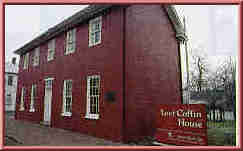 More than 2,000 slaves reached safety due to the efforts of Quaker abolitionist Levi Coffin and his wife Catharine.
More than 2,000 slaves reached safety due to the efforts of Quaker abolitionist Levi Coffin and his wife Catharine. Fugitive slave traffic was heavy in Newport because three main escape routes converged in the small eastern Indiana town.
Fugitive slave traffic was heavy in Newport because three main escape routes converged in the small eastern Indiana town.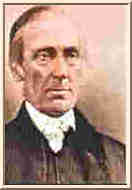
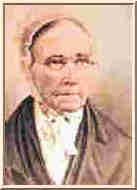 The 30 or so families who settled here ahead of them had come for the same reason. Many were relatives or friends. However, few of the settlers were taking an active part in helping fugitives. This work was being done by freed slaves who were living there.
The 30 or so families who settled here ahead of them had come for the same reason. Many were relatives or friends. However, few of the settlers were taking an active part in helping fugitives. This work was being done by freed slaves who were living there. 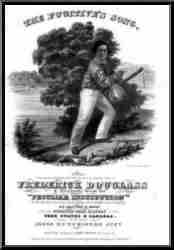 The freed slaves themselves were in constant danger of being seized and resold into bondage.
The freed slaves themselves were in constant danger of being seized and resold into bondage.
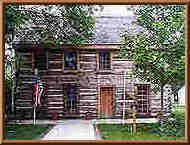 It is the only log cabin courthouse still in existence in the Northwest Territory.
It is the only log cabin courthouse still in existence in the Northwest Territory. You can stroll through aviation history from WWII through the Gulf War.
You can stroll through aviation history from WWII through the Gulf War.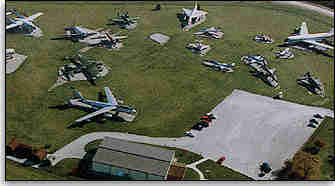 Stand nose-to-nose with a dozen other celebrated planes as well, including a F-11F, F-101, C-47, B-25, F-100, T-33, B-47, KC-97, C-119, F-105, F-4, O-2, U-3, EC-135, C-1 and UH-1H.
Stand nose-to-nose with a dozen other celebrated planes as well, including a F-11F, F-101, C-47, B-25, F-100, T-33, B-47, KC-97, C-119, F-105, F-4, O-2, U-3, EC-135, C-1 and UH-1H.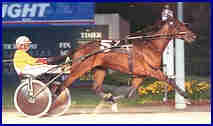 The first winner at Hoosier Park--and therefore Indiana pari-mutuel history--was BK Bentley, driven by the late Gregg Haston.
The first winner at Hoosier Park--and therefore Indiana pari-mutuel history--was BK Bentley, driven by the late Gregg Haston. The exhibit includes thousands of items including clothing from Dean's films, high school yearbooks, a rare Warner Brothers life-mask, hundreds of original movie posters, and books and magazines from over twenty different countries from around the world.
The exhibit includes thousands of items including clothing from Dean's films, high school yearbooks, a rare Warner Brothers life-mask, hundreds of original movie posters, and books and magazines from over twenty different countries from around the world.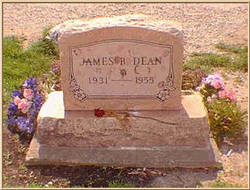 Also included are hundreds of tribute and novelty items that have been produced since the 50's such as plates, mugs, busts, puzzles and gum cards.
Also included are hundreds of tribute and novelty items that have been produced since the 50's such as plates, mugs, busts, puzzles and gum cards.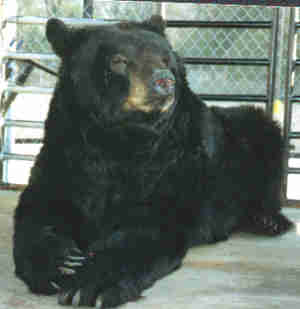 Dedicated to education and conservation, we provide a unique opportunity to meet exotic and endangered animals like lions, tigers, chimpanzees, monkeys, bears, and dozens of other mammals, birds, and reptiles from all over the world.
Dedicated to education and conservation, we provide a unique opportunity to meet exotic and endangered animals like lions, tigers, chimpanzees, monkeys, bears, and dozens of other mammals, birds, and reptiles from all over the world.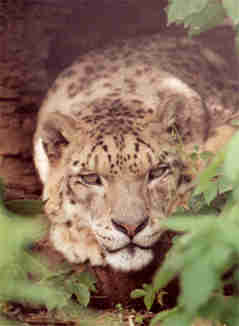 You can also enjoy a self-guided tour at your own pace, and our on-site gift shop and concessions.
You can also enjoy a self-guided tour at your own pace, and our on-site gift shop and concessions.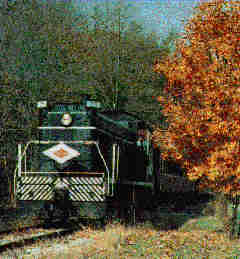 Enjoy a weekend or holiday afternoon by taking a trip "back in time" on a full-size, historic railroad built on the tow path of the Whitewater Shipping Canal.
Enjoy a weekend or holiday afternoon by taking a trip "back in time" on a full-size, historic railroad built on the tow path of the Whitewater Shipping Canal.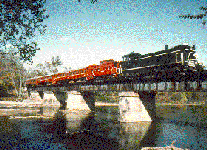 The Whitewater Valley Railroad operates historically significant vintage railroad equipment reminiscent of a time when railroad travel was the way to arrive at your destination refreshed and ready for adventure.
The Whitewater Valley Railroad operates historically significant vintage railroad equipment reminiscent of a time when railroad travel was the way to arrive at your destination refreshed and ready for adventure.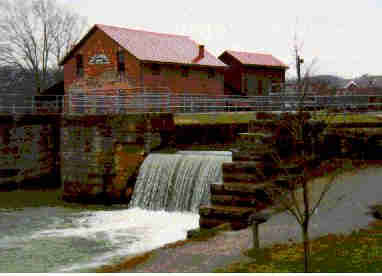 When you step off the train, step back into the 1800's in an historic canal town named Metamora. Here you can spend the two hour train layover visiting the many interpretive/craft/goods/wares shops, strolling through the park or walkways, and watching wheat being ground into flour by the canal's authenic water-powered grist mill.
When you step off the train, step back into the 1800's in an historic canal town named Metamora. Here you can spend the two hour train layover visiting the many interpretive/craft/goods/wares shops, strolling through the park or walkways, and watching wheat being ground into flour by the canal's authenic water-powered grist mill.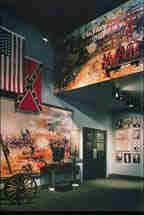 Hall, a lifelong admirer of Abraham Lincoln, wrote to the president’s only surviving son, Robert Todd Lincoln, to ask for a photograph that the company might use on its letterhead. Robert replied, “I find no objection whatever to the use of a portrait of my father upon the letterhead of such a life insurance company named after him as you describe; and I take pleasure in enclosing you, for that purpose, what I regard as a very good photograph of him.”
Hall, a lifelong admirer of Abraham Lincoln, wrote to the president’s only surviving son, Robert Todd Lincoln, to ask for a photograph that the company might use on its letterhead. Robert replied, “I find no objection whatever to the use of a portrait of my father upon the letterhead of such a life insurance company named after him as you describe; and I take pleasure in enclosing you, for that purpose, what I regard as a very good photograph of him.”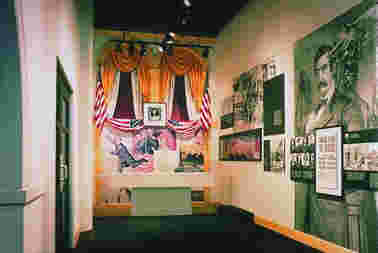 The company prospered, and in 1928 Hall took the opportunity to repay the Lincoln family by creating the Lincoln Historical Research Foundation, dedicated to the life and legacy of Abraham Lincoln.
The company prospered, and in 1928 Hall took the opportunity to repay the Lincoln family by creating the Lincoln Historical Research Foundation, dedicated to the life and legacy of Abraham Lincoln. Tens of thousands of visitors of all ages from throughout the United States and many other countries visit The Lincoln Museum each year.
Tens of thousands of visitors of all ages from throughout the United States and many other countries visit The Lincoln Museum each year.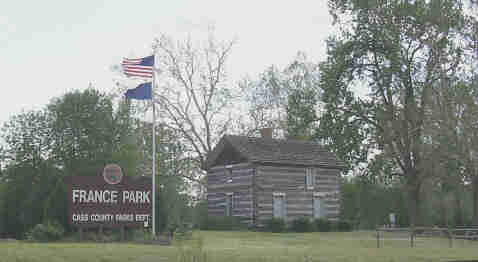 France Park in Cass County is loved and well known for its scenic trails, "tropical" waterfall, clear swimming lake, quiet fishing areas, and spacious camping facilities.
France Park in Cass County is loved and well known for its scenic trails, "tropical" waterfall, clear swimming lake, quiet fishing areas, and spacious camping facilities. The swimming lake is an abandoned spring-fed quarry that attracts SCUBA divers from far away.
The swimming lake is an abandoned spring-fed quarry that attracts SCUBA divers from far away.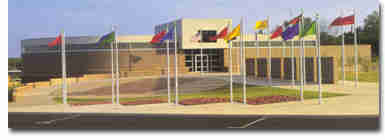 It is only natural that the state of Indiana, which worships the game of basketball like no place else in the world, would operate a Hall of Fame, which chronicles and preserves the heritage of the game, pays tribute to the game's greatest figures, and explores what the sport means to the state's culture, history, and personality.
It is only natural that the state of Indiana, which worships the game of basketball like no place else in the world, would operate a Hall of Fame, which chronicles and preserves the heritage of the game, pays tribute to the game's greatest figures, and explores what the sport means to the state's culture, history, and personality.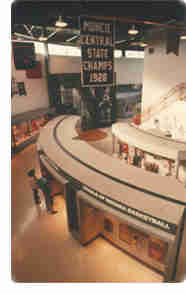 The Indiana Basketball Hall of Fame Museum captures the essence of "Hoosier Hysteria" and helps explain to the visitor why the game of basketball has a special place in the hearts and minds of all who live here.
The Indiana Basketball Hall of Fame Museum captures the essence of "Hoosier Hysteria" and helps explain to the visitor why the game of basketball has a special place in the hearts and minds of all who live here.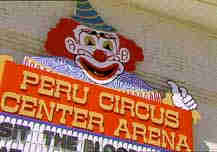
 In 1973 the Festival's 18 member Board of Directors established a Scholarship Fund to assist performers with their college careers.
In 1973 the Festival's 18 member Board of Directors established a Scholarship Fund to assist performers with their college careers. The tree originally stood in the west end of Howard County about two miles north of New London along the north bank of scenic Wildcat Creek.
The tree originally stood in the west end of Howard County about two miles north of New London along the north bank of scenic Wildcat Creek.

PLEASE CLICK ON THE LICENSE PLATE BELOW TO BRING YOU TO PAGE EIGHT OF OUR TOUR,
WE'LL EXPLORE NORTHERN INDIANA!!

 "Cole Porter Medley"
"Cole Porter Medley"
